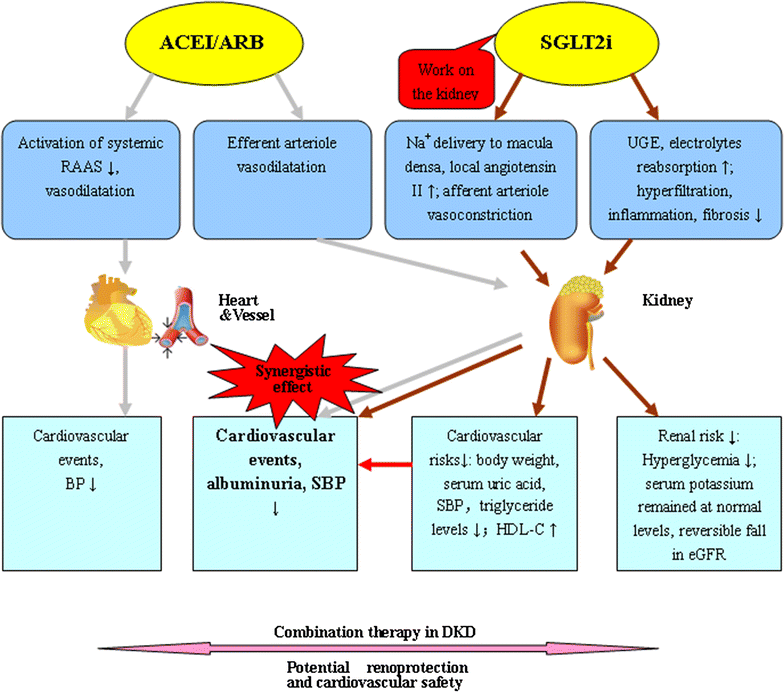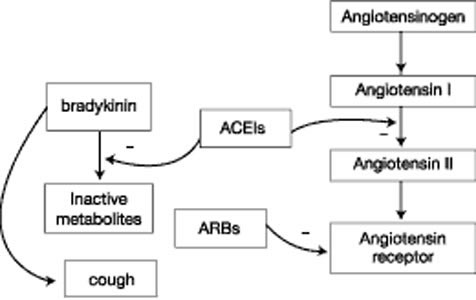Angiotensin converting enzyme inhibitors (acei) statpearls.
Abstract. the effects of the angiotensin converting enzyme (ace) inhibitor lisinopril on blood pressure, proteinuria and renal hemodynamics were evaluated in 13 patients with renal disease of different origin. a comparison was made with the effects of conventional antihypertensive therapy. both drug regimens significantly lowered blood pressure, while only after 12 weeks of treatment with lisinopril, blood pressure was significantly lower than during conventional therapy. Mar 25, 2020 · roozbeh j, banihashemi ma, ghezlou m, et al. captopril and combination therapy of captopril and pentoxifylline in reducing proteinuria in diabetic nephropathy. ren fail. 2010 jan. 32(2):172-8. robles nr, romero b, de vinuesa eg, et al. treatment of proteinuria with lercanidipine associated with renin-angiotensin axis-blocking drugs. 9 oct 2019 (see 'importance of proteinuria and blood pressure control' below. ) versus antihypertensive effects of high-dose ace inhibitor therapy.
Iris Kidney Education Hypertension
A random urine acr is preferred to detect proteinuria (ideally first morning void). acr has greater sensitivity than protein:creatinine ratio (pcr) for low levels of proteinuria. acr ≥3. 0 mg/mmol for both men and women is clinically significant. approximate equivalent values of. Commence acei/arb if diabetic(**). suffix a2 if acr > 3 mg/mmol on ckd stage: 30: 50: proteinuria can be a marker of kidney damage and patients with higher levels of protein in their urine are at increased risk of developing heart disease and progressive kidney damage. it is important to identify these individuals as they may benefit from. A large body of evidence indicates that proteinuria is a strong predictor of proteinuria by using either an angiotensin-converting enzyme inhibitor (acei) or . Dec 14, 2020 · the use of acei acei proteinuria or arb had a superior effect than no acei or arb treatment on decreasing the proteinuria and slowing kidney disease progression. the efficacy of acei and arb was comparable. glomerular disease. the use of acei or arb is the mainstay of treatment in patients with glomerular diseases.
Iris Kidney Education Hypertension
A random urine acr is preferred to detect proteinuria (ideally first morning void). acr has greater sensitivity than protein:creatinine ratio (pcr) for low levels of proteinuria. acr ≥3. 0 mg/mmol for both men and women is clinically significant. approximate equivalent values of acr, pcr and urinary protein excretion:. 20 sep 2002 angiotensin-converting-enzyme (ace) inhibitors are used both to lower blood pressure and to reduce proteinuria in certain patients with renal . Dec 14, 2020 · the use of acei or arb had a superior effect than no acei or arb treatment on decreasing the proteinuria and slowing kidney disease progression. the efficacy of acei and arb was comparable. glomerular disease. the use of acei or arb is the mainstay of treatment in patients with glomerular diseases. Abstract. although angiotensin-converting enzyme inhibitors (aceis) and angiotensin receptor blockers (arbs) belong to a family of therapies that block the renin–angiotensin system and are suggested to improve proteinuria/albuminuria, it acei proteinuria is unclear which is more effective. to compare the effects of aceis and arbs on proteinuria in primary hypertension by performing a meta-analysis covering randomized controlled trials (rcts).
Ace inhibitors have been shown to reduce proteinuria more effectively than other antihypertensives. their antiproteinuric effect seems to be independent of the underlying renal disease, and is mediated by a specific, not yet fully elucidated mechanism. Mar 25, 2020 · roozbeh j, banihashemi acei proteinuria ma, ghezlou m, et al. captopril and combination therapy of captopril and pentoxifylline in reducing proteinuria in diabetic nephropathy. ren fail. 2010 jan. 32(2):172-8. robles nr, romero b, de vinuesa eg, et al. treatment of proteinuria with lercanidipine associated with renin-angiotensin axis-blocking drugs. Should angiotensin-converting enzyme inhibitors (ace-i) be used for diabetic patients with hypertension only if there is also proteinuria? current guidelines for the treatment of hypertension in patients with diabetes with or without microalbuminuria (excretion of 30 mg to < 300 mg/24 hours albumin in the urine1) or macroalbuminuria. Ace inhibitors have been shown to reduce proteinuria more effectively than other antihypertensives. their antiproteinuric effect seems to be independent of the .

Jun 11, 2019 · autoimmune hepatitis is a chronic disease of unknown cause, characterized by continuing hepatocellular inflammation and necrosis and tending to progress to cirrhosis. frequently, immune serum markers are present; they include autoantibodies against liver-specific and non–liver-specific antigens and increased immunoglobulin g (igg) levels. 25 feb 2019 in conclusion, acei or arb monotherapy may retard the of aceis and arbs more effectively reduced proteinuria; however, most of the . Thus, if a dog with ckd receiving an acei or an arb remains hypertensive or severely hypertensive, upward adjustment of the dosage should be the first consideration. many veterinarians start raas inhibitors at the lower limit of the recommended dosage (table 2) and many experts will increase the acei dosage further, up to 2. 0 mg/kg. Ing enzyme inhibitor/angiotensin receptor antagonist (acei/ may be beneficial in patients with igan with renal impairment. atra) may decrease proteinuria in .



Acei/arb acei: lisinopril, benazapril, fosinopril and quinapril 10-40mg, ramipril 5-10mg, trandolapril 2-8mg non-dihydropyridines reduce heart rate and proteinuria vasodilators hydralazine 25-100mg twice daily, minoxidil 5-10mg terazosin 1-5mg, doxazosin 1-4mg given at bedtime. 3 aug 2020 the current kidney disease improving global outcomes (kdigo) guideline, published in 2013, recommends the use of either an ace inhibitor or . Angiotensin-converting enzyme inhibitors lower urinary protein excretion in hypertensive and normotensive patients with renal disease. most children with .
15 oct 2016 placebo on progression to macro-albuminuria in normotensive patients with microalbuminuria and type 1 diabetes. 1 several definitions of . Additionally acei are commonly used after renal transplant to manage post-transplant erythrocytosis, a condition characterised by a persistently high hematocrit greater than 51% which often develops 8-24 months after successful transplantation, as acei have been shown to decrease erythropoietin production. Proteinuria: dogs in stage 1 with up/c >0. 5 should be investigated for disease processes leading to proteinuria (see 1 and 2 below) and treated with antiproteinuric measures (see 3, 4, 5 and 6 below). those with borderline proteinuria (up/c 0. 2 to 0. 5) require close monitoring (see 1 and 6 below). 1.
Ace inhibitors reduce intraglomerular pressure and may restore size and charge integrity to the gcw. they also reduce level of profibrotic cytokines. ace inhibitors reduce proteinuria and also. 12 mar 2020 being used to control proteinuria in early chronic kidney disease of different kinds of acei acei proteinuria or arb or their combination on proteinuria and . More acei proteinuria images.

0 komentar:
Posting Komentar